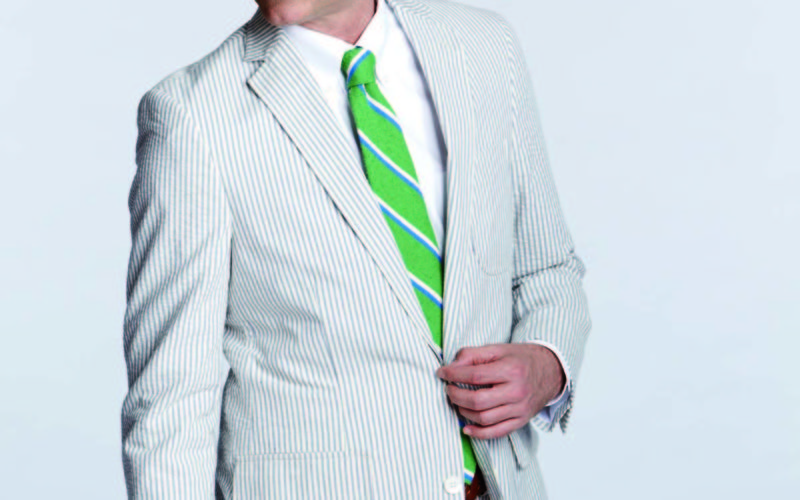Q. When you mentioned light colored suits recently, I was wondering if I can wear a non-matching jacket and pants to some of the same occasions that I would wear a light suit? Would a light colored blazer or sport jacket and new pants be a good choice for my next purchase?
A. Many situations in which a man might wear a light-colored suit do not necessarily require the formality of a matched suit, and so, yes, a well-coordinated jacket and trousers (separates) could work nicely and help set you apart from the crowd. This is assuming you are not referring to mismatched suit components or closely-matched jacket and pants pretending to be a suit. Those are never appropriate.
Lots of occasions would fit the light colored jacket and tie (or even tieless) combos. These could be an office setting or most of the social events on your calendar. Various combinations of tops and bottoms project a grown-up sophisticated look. Your outfit could be two dark items (jacket and trousers), or a dark top and light-colored trousers (a sophisticated look), or a stylish combo of very light dressy jacket and dark bottoms. Medium and lighter shades are especially handsome for blazers and sport coats. They can pair with dress trousers or with casual chinos in either sharply-contrasting colors or in subtly-contrasting ones for a huge variety of smart looks. The first step in your consideration should be color.
COLOR CHOICES: The three basic color families you should be thinking of are blue, brown, and gray – particularly for the jackets, but generally as well for the pants.
BLUES: Jackets may range from powder blue, through bright blues, to navy. These jackets in shades of blue work well with both gray and brown trousers.
BROWNS: Dark brown rarely works as a blazer color, but lighter brown jackets can range from sophisticated ivory/cream, through beige and tan, to camel, and khaki. I know many men (and women) do not know the distinction between these shades, but they are significant and a salesman or an internet search can explain. As I mentioned, an ivory/cream jacket is a sophisticated look that can be further dressed “up” with black trousers or “down” with jeans. A khaki jacket works with pants in darker brown and with almost any shade of blue.
GRAYS: A dark gray jacket is more often associated with a suit, whereas light gray and black options are more common in separates. Light gray jackets look great with darker grays and with black, as well as with deep blue dress trousers.
The above points are the basics of jacket and trouser combinations. When you elevate your wardrobe with a pastel blazer or a distinctive plaid sport coat, either one adds unique sophistication to your ensemble. Whether you decide on an elegant double-breasted blazer, a subtle glen plaid sport coat, or a casual nubby tweed, each style has its own polished look. Ideal for both dressy and casual occasions, they offer versatility and panache, making them great additions to a man’s closet. Here are some other considerations when working on combinations with solid blazers or patterned sport jackets.
- The most classic, expected, and traditional combination is a dark blazer worn with contrasting dark trousers (navy blazer and charcoal dress trousers). Next in formality is a dark blazer with lighter-colored trousers (preppy navy blazer and khakis). A dark top and light bottom (dark blazer and white pants) is a modern sophisticated look.
- Still another smart look is a very light color dressy blazer with dark contrasting dress pants (perhaps an ivory silk blazer with black or charcoal trousers).
- A step less dressy than blazers are tweed or patterned sport jackets. They look best with dark trousers that repeat one of the colors in the jacket’s pattern.
- On the other hand, a unique/refined look is staying in the same color family, sometimes referred to as monochromatic dressing. This would be either a light top worn with dark bottoms or the reverse, but both items in the same color family. So, that would be both blues, both browns, or both grays. You can even follow up with a shirt that is a stripe of white-and-that-color.
I do want to stress, as I wrote above, a major mistake in putting together jacket and trousers separates is choosing colors that are too close to each other. They should never look so much alike that they appear to be a suit. When you’re not wearing a suit, contrast is essential. Make it clear you are creating a stylish look, not pretending it is a suit.
Please send your men’s dress and grooming questions and comments to MALE CALL: Lois.Fenton@prodigy.net









